It looks like you're using an Ad Blocker.
Please white-list or disable AboveTopSecret.com in your ad-blocking tool.
Thank you.
Some features of ATS will be disabled while you continue to use an ad-blocker.
share:
reply to post by Spider879
The fact is that there are no Africans with the caucasoid phenotype that do not also have a significant Eurasian genetic makeup of 40% or above.
The masai dude you posted is another example of an African with significant Eurasian genetic profile so your argument that there are Africans with this phenotype is void, there are only mixed african/eurasians who could be said to have these characteristics. Also I wonder if you could bring yourself to admit that actually the white women the masai dude is looking at has a closer facial structure to khafre then the masai does!
The fact is that there are no Africans with the caucasoid phenotype that do not also have a significant Eurasian genetic makeup of 40% or above.
The masai dude you posted is another example of an African with significant Eurasian genetic profile so your argument that there are Africans with this phenotype is void, there are only mixed african/eurasians who could be said to have these characteristics. Also I wonder if you could bring yourself to admit that actually the white women the masai dude is looking at has a closer facial structure to khafre then the masai does!
edit on 24-6-2013 by LUXUS because: (no reason given)
reply to post by LUXUS
Here's a discussion on admixture into African populations.
anthropogenesis.kinshipstudies.org...
It's quite informative.
Here's a discussion on admixture into African populations.
anthropogenesis.kinshipstudies.org...
It's quite informative.
reply to post by LUXUS
www.ncbi.nlm.nih.gov...
Did you get that^
As far as the Black Asians is concerned the girls belonged to The Orang Asli ethnic group Malysia the kid with coconut Solomon Island and the distinguished looking gentleman was the Prime minister of new Guinea there are among the oldest groups living in Asia Mastodons,Sabre tooth cats ,and giant man eating birds roam the earth when their ancestors left Africa.they are not Africans not by genetics or culture and it's kind of ironic that you would want to link them with Africans based on their looks which is exactly what some "Afro-centrist" (folks you like to berate) claimed.
East Africa occupies a central position in the emergence of hominid species, since it is the location of the earliest fossil evidence for anatomically modern humans, dating back 150,000–160,000 years White et al. Its geographic position makes it one of the most likely sections of Africa from which the colonization of Eurasia by the ancestors of European, Asian, and Oceanian populations started ∼50,000–70,000 years ago: both the “southern” and “northern” routes can be logically drawn as springing from thereTab to the next button to revert the control to an accessible version.Destroy user interface control2000; Kivisild et al. The following popper user interface control may not be accessible. Tab to the next button to revert the control to an accessible version.Destroy user interface control2003a). It is unfortunate that archaeological data for the late Pleistocene and early Holocene in Ethiopia is limited. Obsidian-trading links between coastal East Africa and Arabia can be traced back to the 7th millennium b.c., whereas the beginning of agriculture in Ethiopia is usually attributed to increasing contacts with Egypt and the Near East, from the middle of the 5th millennium b.c. Records concerning the trade of myrrh between Egypt and Ethiopia, along the Red Sea coast, go back to the 3rd millennium b.c. The Horn of Africa may have been the major prehistoric entry point of the African zebu cattle from the southern Arabian peninsula (Hanotte et a
www.ncbi.nlm.nih.gov...
Did you get that^
As far as the Black Asians is concerned the girls belonged to The Orang Asli ethnic group Malysia the kid with coconut Solomon Island and the distinguished looking gentleman was the Prime minister of new Guinea there are among the oldest groups living in Asia Mastodons,Sabre tooth cats ,and giant man eating birds roam the earth when their ancestors left Africa.they are not Africans not by genetics or culture and it's kind of ironic that you would want to link them with Africans based on their looks which is exactly what some "Afro-centrist" (folks you like to berate) claimed.
Originally posted by LUXUS
reply to post by Spider879
The fact is that there are no Africans with the caucasoid phenotype that do not also have a significant Eurasian genetic makeup of 40% or above.
The masai dude you posted is another example of an African with significant Eurasian genetic profile so your argument that there are Africans with this phenotype is void, there are only mixed african/eurasians who could be said to have these characteristics. Also I wonder if you could bring yourself to admit that actually the white women the masai dude is looking at has a closer facial structure to khafre then the masai does!
edit on 24-6-2013 by LUXUS because: (no reason given)
Ah no! and Massai do not have significant Eurasian input and neither does Somali despite being geographically closer
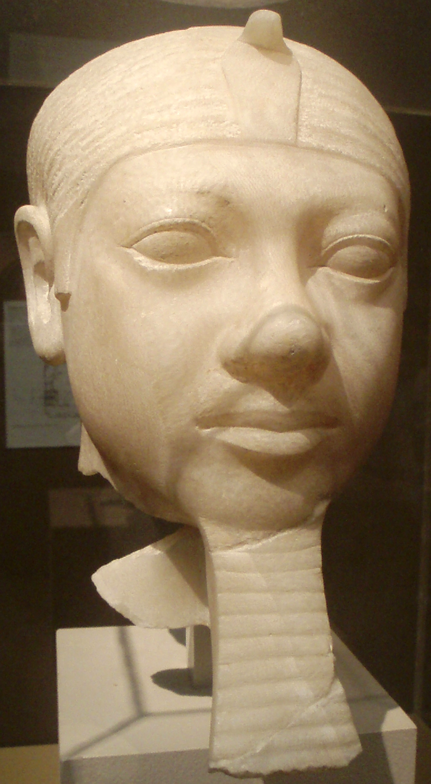


Menkaura and others in the same fam as Khafre no different from my fam or most black folks fam that I know..so it's not all in the nose,and please tell me you are not into the "True Negro" thingy..say it ain't so Luxus say it ain't so.
A little more info on how genetics show that modern African populations have significant
Eurasian ancestry
anthropogenesis.kinshipstudies.org... e-oldest-dog-news-from-around-the-web/
A link to original paper
www.genetics.org...
Eurasian ancestry
This paper supports Meyer et al.’s (2012) conclusion that East Asians are closer to Neandertals than Europeans. The difference is estimated on the order of 40%. This makes it unlikely that the 1-4% similarity between non-African human and Neandertal genomes, to the exclusion of African human genomes, is product of admixture between Neandertals and expanding modern humans. If this was the case, Europeans would have been more heavily admixed than East Asians. The asymmetrical connection between an archaic hominin species and a modern human population is further found in the case of Denisovans, whose remains are geographically located in East Asia but who show greater similarity to modern Melanesians than to East Asians. Wall et al. (2013) report that they failed to find any traces of admixture between Denisovans and East Asians (contra Skoglund & Jacobsson 2011) but they sampled only Japanese and Han Chinese, while Skoglund & Jacobsson reported the highest frequencies of Denisova alleles outside of Melanesia, in Southeast Asia and America (see more here). For the archaic admixture hypothesis to hold, one would need to postulate the dilution of Neandertal alleles in Europe and Denisovan alleles in East Asia by the subsequent (e.g., Neolithic) gene flow of populations unadmixed with Neandertals and Denisovans into these regions. The only place where these populations could have originated is Africa, but there’s no evidence for an excess of African alleles in East Asians and Europeans compared with Melanesians. Hence, the genomic pattern of association between Neandertals, Denisovans and non-African humans may be better explained as common descent, with African humans derived from non-African humans. Wall et al. (2013, 21) found evidence that can be interpreted precisely to such an effect:
Also, we find evidence for a small but significant amount of Neanderthal admixture into the Maasai genomes (p ~ 0.03, Table S4). When compared to the Yoruba, the Maasai have a higher average D than the Luhya (Figure 3b, Table S4). When the Maasai are
compared to all other African samples the average D is positive (Figure 3d). In addition, when East Asians and Europeans are compared to the Maasai, the average D’s are somewhat lower than when they are compared to either the Yoruba or Luhya.”
Text Table S4 shows that all of Wall et al.’s African samples have a Neandertal component, with Yoruba and Luhya training slightly behind Maasai. The paucity of Neandertal and Denisovan alleles in such “Paleoafricans” as Khoisans is better explained as product of admixture with African archaics that diluted the original Eurasia-derived gene pool of Africans.
anthropogenesis.kinshipstudies.org... e-oldest-dog-news-from-around-the-web/
A link to original paper
www.genetics.org...
edit on 25-6-2013 by punkinworks10 because: (no reason given)
edit on 25-6-2013 by punkinworks10 because: (no reason
given)
none of this really means anything, DNA is fickle thing and doesnt give us the reality of ancestry. Anyone from anywhere could have those genes, im
sure somewhere down the line someone from somewhere give them those genes. What i find weird and kinda annoying is how everyone on the internet the
main topic of discussion tends to be were they white or black? europeons would like to think they were white and if you read anything written by
africans they would have you think pharaohs descended from zimbabwe or something. i wonder how ancient egyptians seperated themselves from their
neighbors.
Originally posted by DuneKnight
none of this really means anything, DNA is fickle thing and doesnt give us the reality of ancestry. Anyone from anywhere could have those genes, im sure somewhere down the line someone from somewhere give them those genes. What i find weird and kinda annoying is how everyone on the internet the main topic of discussion tends to be were they white or black? europeons would like to think they were white and if you read anything written by africans they would have you think pharaohs descended from zimbabwe or something. i wonder how ancient egyptians seperated themselves from their neighbors.
I agree with you some what Dna is fickle and without a multidisciplinary approach one could never get a true picture of what they were like, African Dna is a-washed in Europe I read one report that put African genetic contribution in Iberia of a thousand yrs B.C as approaching 50% but if true does that make the people of Iberia Africans or that one of the founding fathers and president of the United States shared genes with the Fulani of western Africa ,Adolph Hitler,Benito Mussolini and others carried African and Levantine Dna are they suddenly not white or European.
The Ancient Kemities used geographical boundaries like most folks this boundary sometimes expand and contract depending the power politics of the era or dynasty ,above all else Egypt is in Africa there should be no exotic explanations of why the ancient kemeties looked like Zimbabweans some of the time and Horners at other times or a combination of all the above with some non African input all great civilization end up doing this,Rome,Greece,Babylon etc but all are recognized as being rooted in their geographical area,it is only in Africa where some tried to make a case for some kind of dynastic master race of ultimately non African origins to explain the rise of high civilization there that include but not limited to ancient Kemet.
edit on 30-6-2013 by Spider879 because: (no reason given)
DNA decides everything from the shape of your big toe to a birthmark on your butt so the idea that it will not fully settle the question of who the
ancient Egyptians were is ridiculous!
DNA extracted from the royal mummies will establish what haplogroup they belonged to and who in the world today are most closely related to them and there will be nowhere to hide when this information is finally released, all I'm saying is that there will be lots of unhappy people selling their Afrocentric book collection and Egyptian jewelery on ebay
DNA extracted from the royal mummies will establish what haplogroup they belonged to and who in the world today are most closely related to them and there will be nowhere to hide when this information is finally released, all I'm saying is that there will be lots of unhappy people selling their Afrocentric book collection and Egyptian jewelery on ebay
Originally posted by LUXUS
DNA decides everything from the shape of your big toe to a birthmark on your butt so the idea that it will not fully settle the question of who the ancient Egyptians were is ridiculous!
DNA extracted from the royal mummies will establish what haplogroup they belonged to and who in the world today are most closely related to them and there will be nowhere to hide when this information is finally released, all I'm saying is that there will be lots of unhappy people selling their Afrocentric book collection and Egyptian jewelery on ebay
Hah!!...done already and on that quintessential mummy deemed the most Caucasian by Euro-centrist because of his phenotype..yes that of Ramesses III for he belonged to YDNA haplogroup E1b1a,you just dont get much more African than that and I asked you before atleast twice anyhow to research the E series haplogroup but did you listen??..hell no!! and this is independent from DNA Tribe's work on the Amarna mummies,you will have to sign in to get the full skinny but here goes.
Ramesses III belonged to YDNA haplogroup E1b1a
www.bmj.com...
According to a study published yesterday, Revisiting the harem conspiracy and death of Ramesses III: anthropological, forensic, radiological, and genetic study, Y- STR data places his YDNA haplogroup in E1b1a using Whit Athey's Haplogroup predictor: "Genetic kinship analyses revealed identical haplotypes in both mummies (table 1⇓); using the Whit Athey’s haplogroup predictor, we determined the Y chromosomal haplogroup E1b1a. " his DYS repeats are listed as follows:
DYS 19 19
DYS 385a,b 20
DYS 389I 13
DYS 389II 33 DYS 390 21
DYS 391 8
DYS 392 17
DYS 393 8
DYS 437 14
DYS 438 10
DYS 448 20
DYS 456 13
YGATAH4 13
Thuya.
The Thuya Gene One of the autosomal ancestry markers prominent in the Royal Egyptian families of the New Kingdom, this not-so-rare gene is Central African in origin and was passed to Thuya from her forebears, Queens of Upper and Lower Egypt and High Priestesses of Hathor, the Mother Goddess. Thuya passed it to her grandson Akhenaten and great-grandson Tutankhamun, among others, as documented in a forensic study of the Amarna mummies by Zahi Hawass, head of the Supreme Council of Antiquities in Cairo, in 2010. Today, its highest incidence is in Somalians at nearly 50%. It is found in 40% of Muslim Egyptians. On average, 1 in 3 Africans or African Americans carries it. It crops up in high concentrations in many places around the world such as the Basque region (41%) and in Melungeons (31%, similar to Middle Easterners), but is present at only low levels in East and South Asia, as well as Native America. Its lowest frequency is in the Chukchi of Siberia (3%). - See more at: dnaconsultants.com...
King Tut
dnaconsultants.com...
The King Tut Gene Tutankhamun (also spelled Tutenkhamen) is the most famous of all pharaohs. He was the son and successor of Akhenaten, grandson of Amenhotep III and Queen Tiye and great-grandson of the royal matriarch Queen Thuya. Archeologist Howard Carter’s opening of his intact tomb in the Valley of the Kings in 1922 ranks among the most splendid discoveries of history. In 2010, genetic fingerprinting of his mummy determined that he died at the early age of 19 as the result of violence or an accident to which the incestuous relationship of his parents and several genetic defects contributed. Tutankhamun actually carries a “double dose” of the allele named for him. Like most of the other genes in the family, it is Central African in ancient origin, but unlike the other markers it has a sparse distribution outside Africa with a worldwide average frequency of 4%. Still, Africans and African-influenced populations (1 in about 10) are about twice or three times as likely to have it as non-Africans. - See more at: dnaconsultants.com...
Akhenaten
dnaconsultants.com...
The Akhenaten Gene Named for the pharaoh who attempted to convert Egypt to monotheism, this autosomal ancestry marker like most of the Amarna family group’s DNA is clearly African in origin. Akhenaten received it from his mother, Queen Tiye. Today, it is the gene type carried by a majority (52%) of the Copts living in the Pre-dynastic site of Adaima near Thebes or Luxor and the Valley of the Kings on the Nile River in Upper (southern) Egypt. The ancient marker makes a good showing in the Middle East and in Jews as well as parts of southern Europe close to Africa, such as southern Italy and Spain, but it is reduced to low levels in Asia and the Americas (except where brought there by Africans or people carrying some African ancestry). About 2 in 5 Africans or African Americans has it. Among Melungeons, the figure is 1 in 3. - Seeedit on 1-7-2013 by Spider879 because: (no reason given)
Sally-Ann Ashton talking at the Manchester Museum, University of Manchester, UK, at the conference, Egypt in its African Context, 3-4 October 2009. Sally-Ann is a Senior Curator in the Department of Antiquities, Fitzwilliam Museum, Cambridge, UK. She is discussing the presentation of ancient Egypt as part of Black history, in media and museums.

academia.edu...
This volume forms the proceedings of the conference, Egypt in its African Context, which took place at The Manchester Museum, University of Manchester, UK, on the 3-4 October 2009. The conference at Manchester had a number of aims: to address perceptions of Ancient Egypt in the West, in scholarly writing and public understanding; to present a scholarly approach to the subject of Egypt in Africa in order to counterbalance the extreme Afrocentric views within which such a debate is often contextualised; to investigate how community groups and professional Egyptologists can transfer their knowledge and points of view; and to present the work of scholars working on African-centred Egyptology to a wider audience including the traditional academic Egyptological community. Contents: Introduction: Egypt in its African Context
Kudos to Sally Ann Ashton and the Fitzwilliam Museum
Now think again on the posting above and elsewhere if you think this is all the ravings of lunatic fringe Afro-centrist think again the fact is alot of folks in academia is tired of double speak when addressing ancient kemet and this includes critics of Afrocentrism.
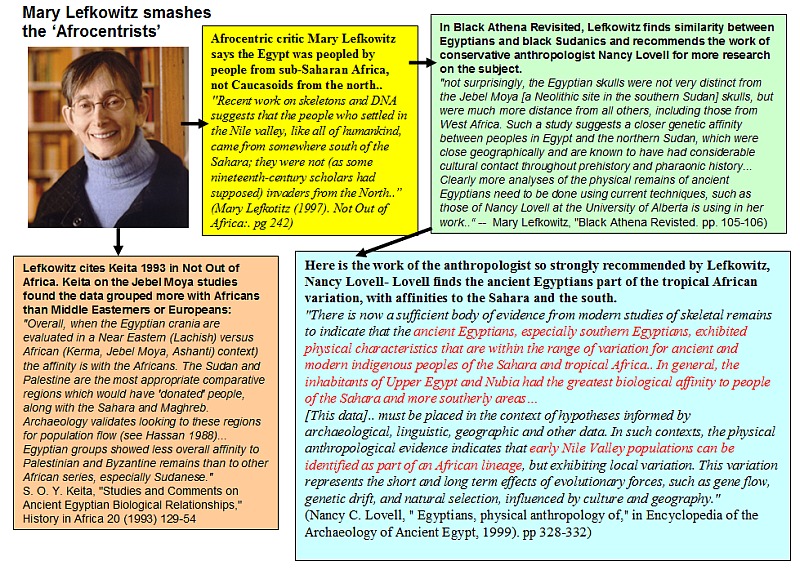
Afrocentric critic Mary Lefkowitz says the Egypt was peopled by people from sub-Saharan Africa, not Europeans or Middle Easterners. "Recent work on skeletons and DNA suggests that the people who settled in the Nile valley, like all of humankind, came from somewhere south of the Sahara; they were not (as some nineteenth-century scholars had supposed) invaders from the North. See Bruce G. Trigger, "The Rise of Civilization in Egypt," Cambridge History of Africa (Cambridge, Cambridge University Press, 1982), vol I, pp 489-90; S. O. Y. Keita, "Studies and Comments on Ancient Egyptian Biological Relationships," History in Africa 20 (1993) 129-54." (Mary Lefkotitz (1997). Not Out of Africa: How Afrocentrism Became an Excuse to Teach Myth as History. Basic Books. pg 242) In Black Athena Revisited, Lefkowitz finds similarity between Egyptians and Sudanics and recommends the work of conservative anthropologist Nancy Lovell for more research on the subject.
nilevalleypeoples.blogspot.jp...
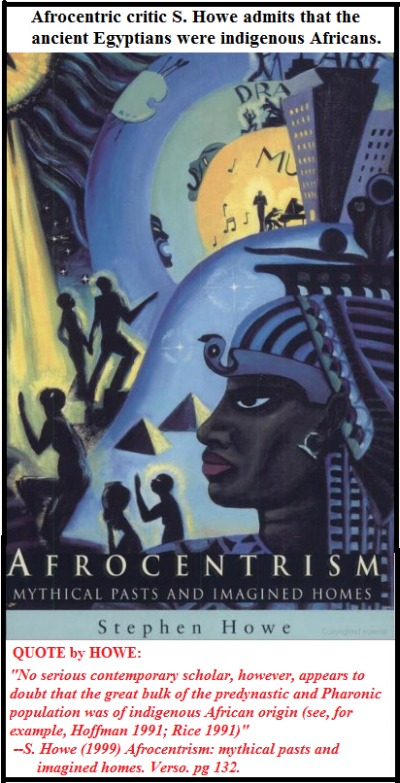
Followed by Stephen Howe a very adamant critic of Afrocentrism threw in the towel when it came to who populate ancient Kemet..
edit on 1-7-2013 by Spider879 because: (no reason given)
reply to post by Spider879
DNA tribes is a joke, they have no access to any ancient Egyptian mummies, have no geneticists working for them and don't even have a lab, they are a sample forwarding company run from a po box address with tons of unhappy customers (mostly African ones).
They were asked by other geneticists to give access to their work which they refused!
DNA tribes is a joke, they have no access to any ancient Egyptian mummies, have no geneticists working for them and don't even have a lab, they are a sample forwarding company run from a po box address with tons of unhappy customers (mostly African ones).
They were asked by other geneticists to give access to their work which they refused!
Originally posted by LUXUS
reply to post by Spider879
DNA tribes is a joke, they have no access to any ancient Egyptian mummies, have no geneticists working for them and don't even have a lab, they are a sample forwarding company run from a po box address with tons of unhappy customers (mostly African ones).
They were asked by other geneticists to give access to their work which they refused!

jama.jamanetwork.com...

cracs.fc.up.pt...
PopAffiliator Prediction of an individual affiliation to a major population group based on information from a small set of autosomal STRs
Don't like Dna Tribe?? which I never included in the above posts fine you can take the data from Jama and plug it into the above kit tell me what you get.
reply to post by Spider879
This Dnatribes report came out some years ago and at the time it was shot out of the sky by geneticists for two reasons, firstly they said 8 STR markers was not sufficient to determine a persons haplogroup, a minimum of 15 is required and secondly the haplogroup calculator dna tribes used was of their own and they refused to give access to this calculator to experts who requested to examine it saying it was patent pending. We dont know if Dnatribes even has such a calculator but they said they had their own special calculator after experts told them many online calculators were inappropriate for genetic ancestry analysis.
Dnatribes never did make known what calculator they used and said themselves that the same results could not be repeatably obtained.
So if using 10 markers there is an error of over 30% using 8 markers would be worthless in any scientific study which is why at the time this report was produced genetic experts challenged dnatribes and dnatribes ran away with their tail between their legs!
This Dnatribes report came out some years ago and at the time it was shot out of the sky by geneticists for two reasons, firstly they said 8 STR markers was not sufficient to determine a persons haplogroup, a minimum of 15 is required and secondly the haplogroup calculator dna tribes used was of their own and they refused to give access to this calculator to experts who requested to examine it saying it was patent pending. We dont know if Dnatribes even has such a calculator but they said they had their own special calculator after experts told them many online calculators were inappropriate for genetic ancestry analysis.
Dnatribes never did make known what calculator they used and said themselves that the same results could not be repeatably obtained.
Q: Is DNA Tribes proprietary method of analysis available elsewhere?
No. Some forensic calculators use the CODIS STR markers used for DNA Tribes genetic ancestry analysis. However, these calculators use forensic match calculations that are inappropriate for genetic ancestry analysis. DNA Tribes analysis is based on a unique, patent pending genetic ancestry algorithm developed by Dr. Eduardas Valaitis (Ph.D. in Statistics, Yale University 2005) available exclusively through DNAtribes.com.
studies using only 10 autosomal loci have a huge statistical margin of error of over 30%. And that margin of error steadily decreases as one increases the number of markers analysed.
So if using 10 markers there is an error of over 30% using 8 markers would be worthless in any scientific study which is why at the time this report was produced genetic experts challenged dnatribes and dnatribes ran away with their tail between their legs!
edit on 1-7-2013 by LUXUS because:
(no reason given)
Okay so plug in the ones from Jama
This carries the stamp of approval from Hawass himself no friend to so-called Afrocentrist
www.bmj.com...
Ancient DNA: Curse of the Pharaoh's DNA
www.nature.com...
This carries the stamp of approval from Hawass himself no friend to so-called Afrocentrist
www.bmj.com...
Revisiting the harem conspiracy and death of Ramesses III: anthropological, forensic, radiological, and genetic study. Zahi Hawass, egyptologist1, Somaia Ismail, professor of molecular biology23, Ashraf Selim, professor of radiology4, Sahar N Saleem, professor of radiology4, Dina Fathalla, molecular biologist3, Sally Wasef, molecular biologist5, Ahmed Z Gad, molecular biologist3, Rama Saad, molecular biologist3, Suzan Fares, molecular biologist3, Hany Amer, assistant professor of pharmacology6, Paul Gostner, radiologist7, Yehia Z Gad, professor of molecular genetics2, Carsten M Pusch, molecular biologist8, Albert R Zink, paleopathologist9
edit on 1-7-2013 by Spider879 because: (no reason given)
reply to post by Spider879
The 8 str values has his approval yes, that they were black no. It was Hawass himself who said:
"Tutankhamen was not black, and the portrayal of ancient Egyptian civilization as black has no element of truth to it”
In regards to the actual race of the ancient Egyptians Hawass stamp of approval has only been given on the dna study below by Professor Moamena Kamel of the Cairo University Medical School.
The 8 str values has his approval yes, that they were black no. It was Hawass himself who said:
"Tutankhamen was not black, and the portrayal of ancient Egyptian civilization as black has no element of truth to it”
In regards to the actual race of the ancient Egyptians Hawass stamp of approval has only been given on the dna study below by Professor Moamena Kamel of the Cairo University Medical School.
edit on 1-7-2013 by LUXUS because: (no reason given)
reply to post by LUXUS
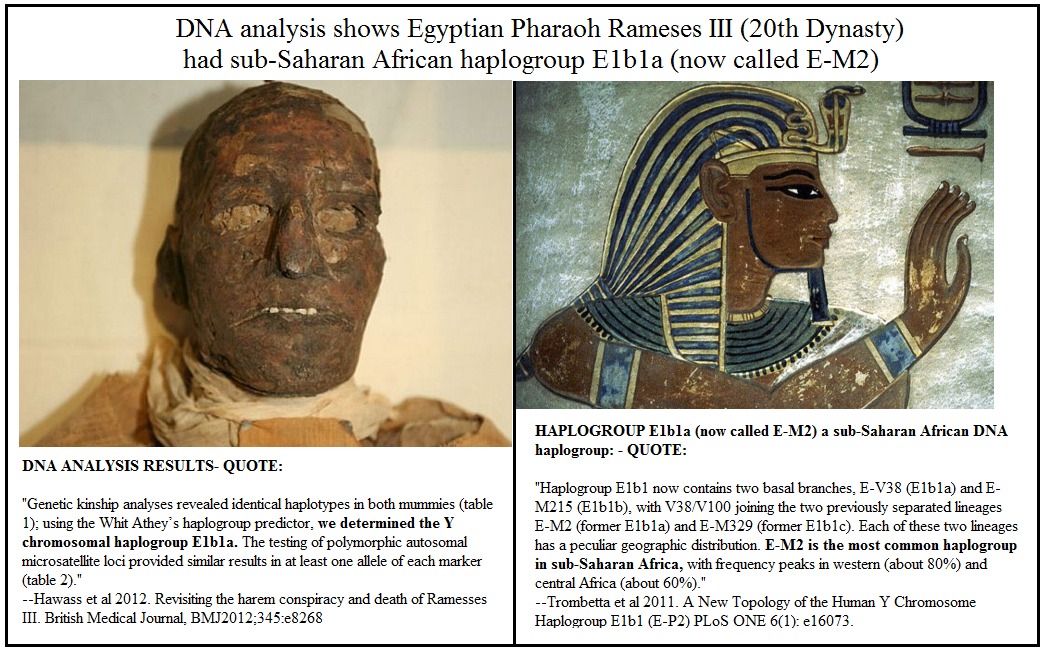
The data look at the data run the numbers yourself not whether or not he said anything about the Kemites being black.
www.plosone.org...:doi/10.1371/journal.pone.0016073
klik here for Elbla

The data look at the data run the numbers yourself not whether or not he said anything about the Kemites being black.
www.plosone.org...:doi/10.1371/journal.pone.0016073
klik here for Elbla
edit on 1-7-2013 by Spider879 because: Add more info
reply to post by Spider879
I already explained about the 8str markers and the haplogroup calculator, running to your Afrocentric slides wont somehow change that!
Actually getting board now of you talk about how the ancient Egyptians were black sub Saharans!
A little taste of the glory's of the sub Saharans and their contribution to Egypt
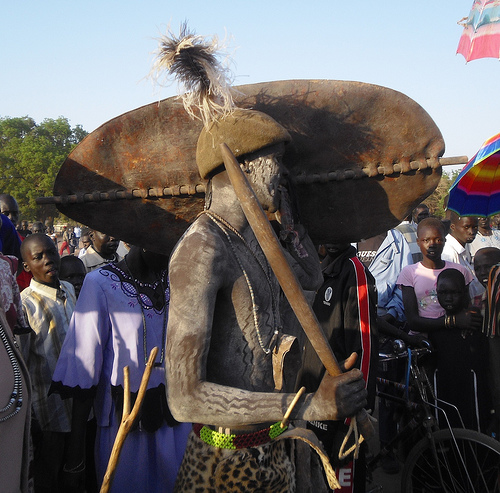
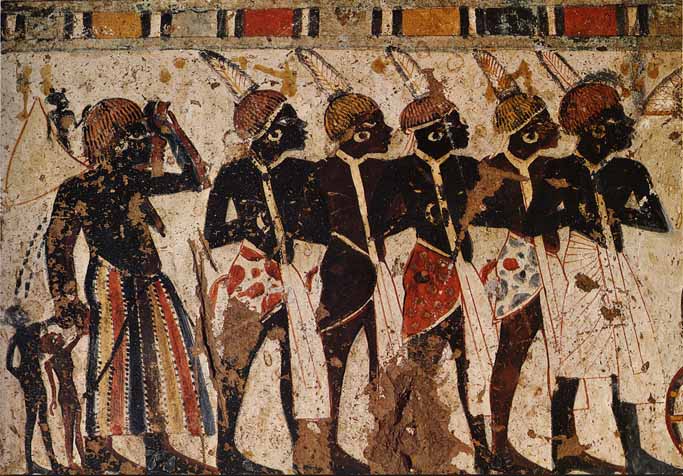
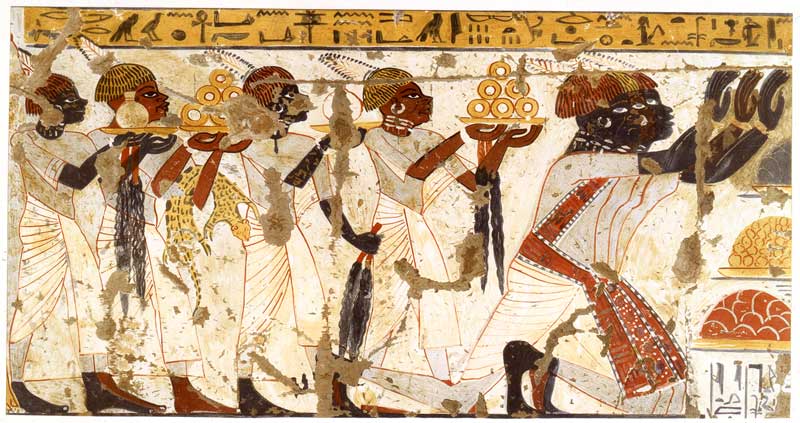
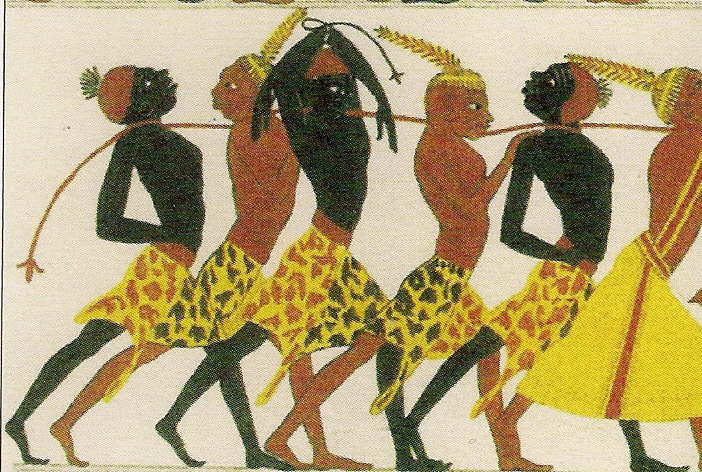
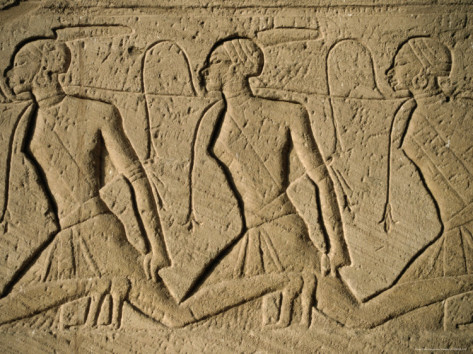
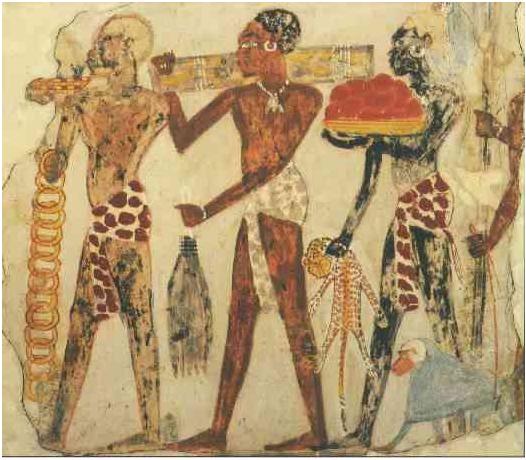
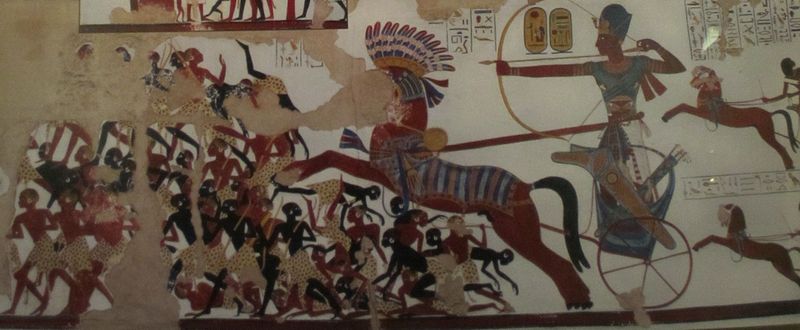
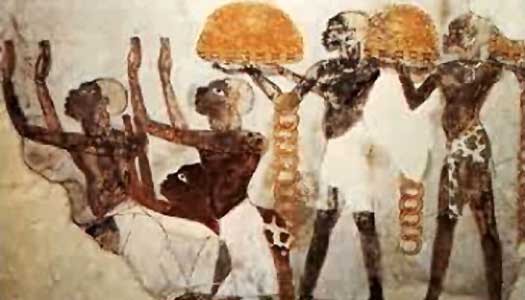
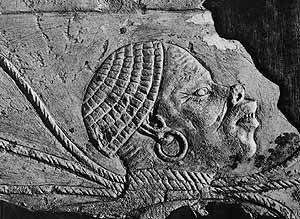
I already explained about the 8str markers and the haplogroup calculator, running to your Afrocentric slides wont somehow change that!
Actually getting board now of you talk about how the ancient Egyptians were black sub Saharans!
A little taste of the glory's of the sub Saharans and their contribution to Egypt









reply to post by LUXUS
So resort to selective picture spam of various southern ethnys being captured after all you have nothing on Rameses being Elbla you could not bring yourself to plug in those figures
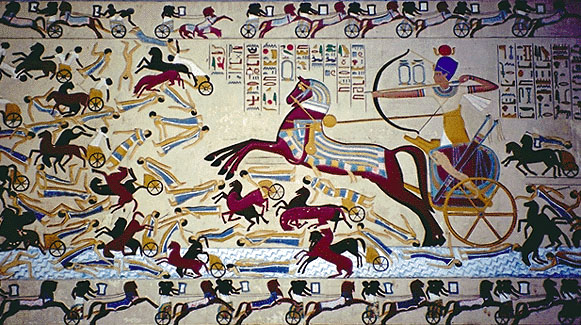
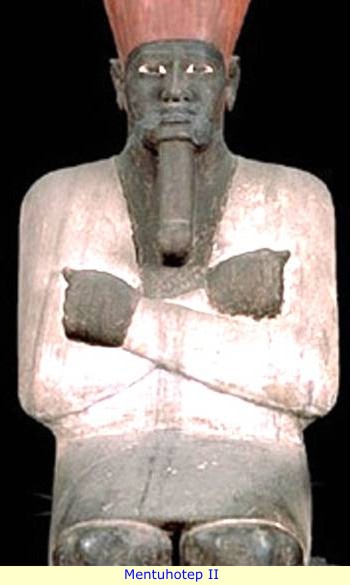
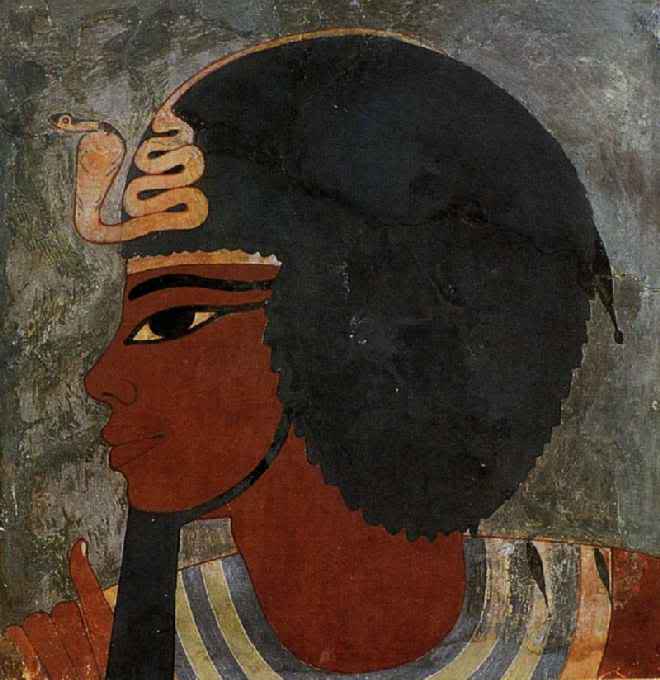
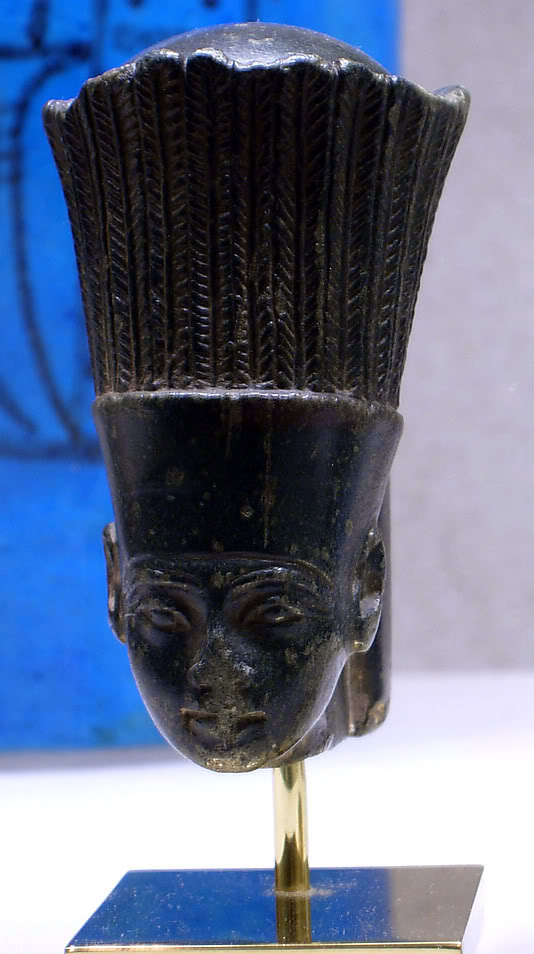
Yes they wore feathers too..

Hair style as it was yesterday and is today

Rameses Elbla or E- M2 his Blue crown in contrast with his distant cousin on the Great lakes region thousands of yrs later..
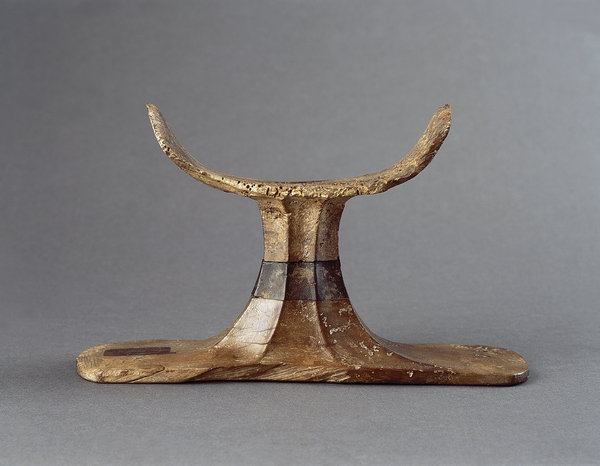
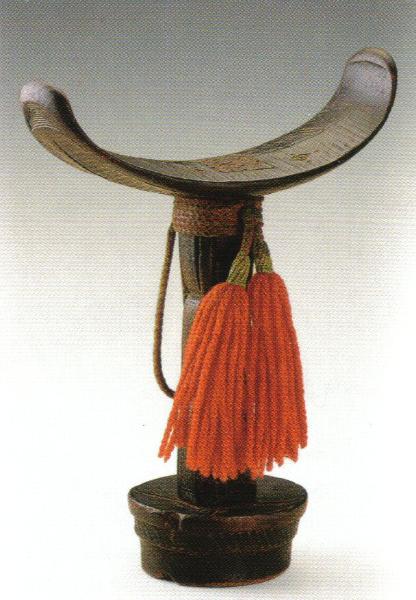
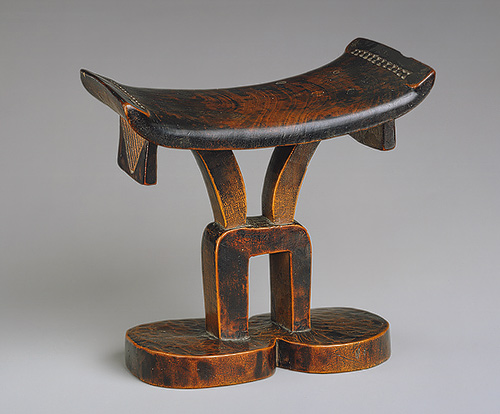
Found right across Africa from Kemet to Zimbabwe but no where out side it.
For lurkers and folks who are truly interested in the connection with Kemet and the rest of Africa please go here
www.abovetopsecret.com...
Will be making some up dates
Post Script without a multi-disciplined approach taking everything into account geography,bio-anthropology,historiography, archaeology,historical documentation even folk lore you will always come up short and frustrated but foremost check your ego, preconceptions and prejudices at the door.
I already explained about the 8str markers and the haplogroup calculator, running to your Afrocentric slides wont somehow change that! Actually getting board now of you talk about how the ancient Egyptians were black sub Saharans! A little taste of the glory's of the sub Saharans and their contribution to Egypt
So resort to selective picture spam of various southern ethnys being captured after all you have nothing on Rameses being Elbla you could not bring yourself to plug in those figures




Yes they wore feathers too..

Hair style as it was yesterday and is today

Rameses Elbla or E- M2 his Blue crown in contrast with his distant cousin on the Great lakes region thousands of yrs later..



Found right across Africa from Kemet to Zimbabwe but no where out side it.
For lurkers and folks who are truly interested in the connection with Kemet and the rest of Africa please go here
www.abovetopsecret.com...
Will be making some up dates
Post Script without a multi-disciplined approach taking everything into account geography,bio-anthropology,historiography, archaeology,historical documentation even folk lore you will always come up short and frustrated but foremost check your ego, preconceptions and prejudices at the door.
edit on 1-7-2013 by Spider879 because: For PSA
new topics
-
Paradox of Progress
Ancient & Lost Civilizations: 1 hours ago -
Joe Biden gives the USA's Highest Civilian Honor Award to Hillary Clinton and George Soros.
US Political Madness: 4 hours ago -
Winter Storm
Fragile Earth: 4 hours ago -
Biden Face Planted Somewhere
Politicians & People: 6 hours ago -
A great artist and storyteller, for kids of all ages
General Entertainment: 7 hours ago -
What Is 'Quad Demic'? Mask Mandate Returns In These US States
Diseases and Pandemics: 10 hours ago -
The Future of fashion .
Social Issues and Civil Unrest: 11 hours ago
top topics
-
Joe Biden gives the USA's Highest Civilian Honor Award to Hillary Clinton and George Soros.
US Political Madness: 4 hours ago, 13 flags -
What Is 'Quad Demic'? Mask Mandate Returns In These US States
Diseases and Pandemics: 10 hours ago, 10 flags -
Volcano Watch 2025
Fragile Earth: 13 hours ago, 8 flags -
The Future of fashion .
Social Issues and Civil Unrest: 11 hours ago, 8 flags -
Winter Storm
Fragile Earth: 4 hours ago, 7 flags -
Bin Cyber Junk…
Short Stories: 12 hours ago, 6 flags -
Biden Face Planted Somewhere
Politicians & People: 6 hours ago, 5 flags -
A great artist and storyteller, for kids of all ages
General Entertainment: 7 hours ago, 4 flags -
Paradox of Progress
Ancient & Lost Civilizations: 1 hours ago, 4 flags -
The Undertones - Teenage Kicks
Music: 12 hours ago, 3 flags
active topics
-
Joe Biden gives the USA's Highest Civilian Honor Award to Hillary Clinton and George Soros.
US Political Madness • 29 • : caterpillage -
What Is 'Quad Demic'? Mask Mandate Returns In These US States
Diseases and Pandemics • 27 • : Kaiju666 -
Winter Storm
Fragile Earth • 17 • : WeMustCare -
NJ Drones tied to Tesla explosion at Trump Las vegas
General Conspiracies • 45 • : glen200376 -
Paradox of Progress
Ancient & Lost Civilizations • 2 • : ChaoticOrder -
New Jersey-Teachers Can Now Be Certified Without Passing Basic Reading Writing Math Testing
Education and Media • 14 • : boatguy12 -
-@TH3WH17ERABB17- -Q- ---TIME TO SHOW THE WORLD--- -Part- --44--
Dissecting Disinformation • 3930 • : duncanagain -
Judge rules president-elect Donald Trump must be sentenced in 'hush money' trial
US Political Madness • 18 • : marg6043 -
Volcano Watch 2025
Fragile Earth • 6 • : rickymouse -
The Future of fashion .
Social Issues and Civil Unrest • 18 • : KrustyKrab
